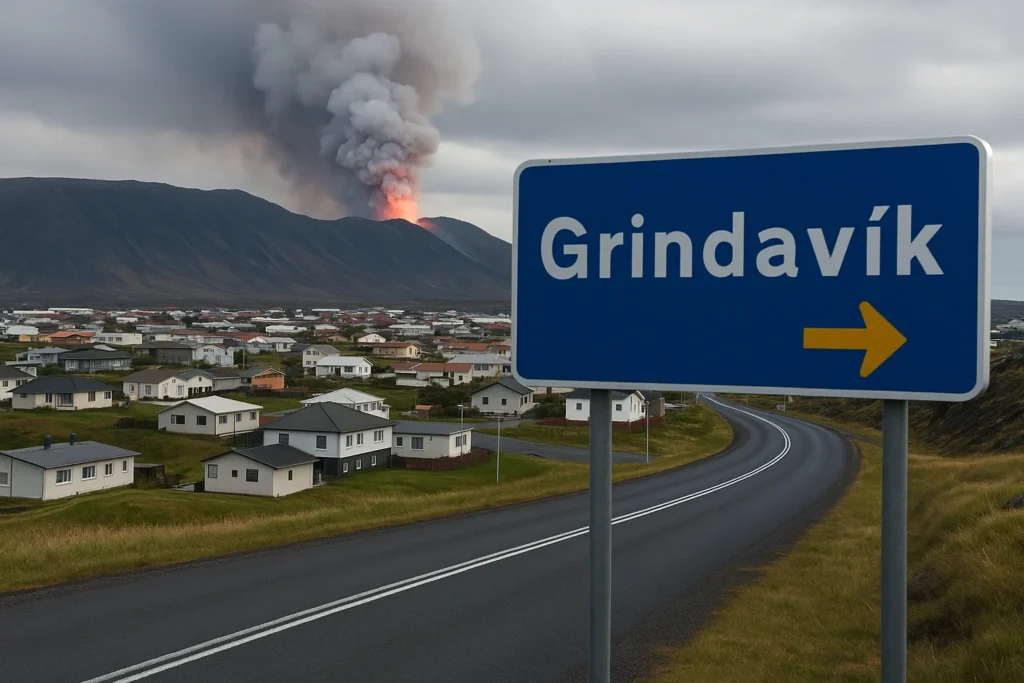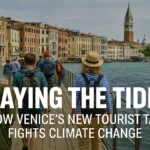Prologue: The Night the Earth Roared
It began with a sound fisherman Jón Ólafsson describes as “the earth itself groaning.” At 3:17 AM on November 10, 2023, seismic sensors across Iceland’s Reykjanes Peninsula lit up like fireworks. Beneath the quiet fishing town of Grindavík, magma was on the move—and it wasn’t stopping for anyone.
“I woke to my entire house shaking like a boat in a storm,” recalls schoolteacher Helga Magnúsdóttir, her hands still trembling slightly as she describes that night. “The dresser fell over, pictures flew off walls, and when I looked outside, the street had a crack wide enough to swallow a car.”
Within hours, Iceland’s Civil Protection agency had evacuated all 3,800 residents. What no one knew then was that this would be the last night most would ever spend in their homes. Over the next eighteen months, eleven separate volcanic eruptions would transform Grindavík from a thriving community into a modern-day Pompeii—one being dismantled by choice rather than disaster.
Chapter 1: The Awakening of the Fires
A Peninsula Reborn in Fire
The Reykjanes Peninsula had been geologically quiet for nearly 800 years—so long that medieval settlers’ accounts of eruptions were considered more legend than history. That changed dramatically in 2021 when Fagradalsfjall volcano erupted after centuries of dormancy, beginning what scientists now call “the Second Fires” period.
“These aren’t isolated eruptions,” explains Dr. Bryndís Ýr Gísladóttir, Iceland’s foremost volcanologist. “We’re witnessing the complete reactivation of an entire volcanic system that could remain active for decades, if not centuries.”
The Unfolding Disaster Timeline
2021-2023: The Warning Signs
- Small earthquakes (up to 5.2 magnitude)
- Ground inflation of 10cm near Grindavík
- New hot springs appearing near the Blue Lagoon
November 2023: The Evacuation
- 4.8 magnitude quake damages infrastructure
- 15km magma tunnel discovered beneath town
- Entire population relocated to temporary housing
2024: The Eruptions Begin
- January: Lava reaches within 450m of town
- February: First homes destroyed
- March: Critical water pipes severed
- May: Evacuation becomes permanent
Chapter 2: The Anatomy of an Impossible Choice
Why Grindavík Couldn’t Be Saved
- The Magma Tunnel Network
- 3 major channels now crisscross beneath the town
- Enough lava to fill 100,000 Olympic pools
- Impossible to predict next eruption site
- Infrastructure Collapse
- Roads warped beyond repair
- Sewage and water systems fractured
- Power grid compromised by ground movement
- Psychological Toll
- 78% of residents reported severe anxiety
- Schoolchildren drawing erupting houses
- Emergency responders stretched beyond limits
The Relocation Decision Process
After nine months of intense debate, Iceland’s Parliament voted 52-8 in April 2025 to abandon Grindavík. Key factors included:
- Scientific Consensus: 97% of geologists agreed town was untenable
- Economic Reality: Constant rebuilding would bankrupt local government
- Public Will: 89% of residents voted for relocation over endless uncertainty
Chapter 3: Building a New Grindavík
The New Site: Reykjanesbær-2
Located 30km northeast on stable bedrock, the new town incorporates cutting-edge resilient design:
Housing Innovations
- Geothermal-heated geodesic domes
- Earthquake-resistant modular construction
- Adjustable foundations for minor ground shifts
Economic Transition
- $200 million geothermal plant to replace fishing
- High-tech greenhouse agriculture
- Volcanic tourism research center
Cultural Preservation
- Digital twin of original town
- Replicated harbor with original boats
- Community memory project recording oral histories
The Phased Relocation Plan
Phase 1 (2025-2026)
- Demolition of unsafe structures
- Infrastructure construction at new site
- Job training programs
Phase 2 (2026-2027)
- First 1,000 residents move
- Schools and hospitals open
- Fishing cooperative transitions
Phase 3 (2028+)
- Original town becomes research zone
- Memorial park construction
- Full economic transition complete
Chapter 4: The Human Stories
The Fisherman’s Dilemma
Ólafur Ragnarsson’s family has fished Grindavík’s waters since 1786. “My great-great-grandfather survived the last eruptions,” he says, staring at the cracked concrete where his fish processing plant once stood. “But he didn’t have to move inland. The sea was our life. What are we without it?”
The Children of the Eruptions
Ten-year-old Elín has lived in three different temporary homes since the evacuation. “I miss my bedroom,” she whispers, clutching a stuffed puffin blackened by volcanic ash. “But Mommy says our new house won’t shake anymore.”
The Mayor’s Burden
Fannar Jónasson, Grindavík’s mayor, hasn’t slept more than four hours a night since the crisis began. “I signed both birth certificates and demolition orders,” he admits, showing the town seal he’ll soon retire. “History will judge whether we made the right choice.”
Chapter 5: The Global Implications
Climate Migration Comes to Europe
While island nations like Kiribati have planned relocations, Grindavík represents a first for the developed world—with critical lessons:
- Preemptive vs. Reactive Moves
- Contrast with New Orleans post-Katrina
- Saved countless lives by acting early
- Economic Transition Models
- Not just moving homes but entire economies
- Geothermal plant replaces fishing industry
- Cultural Preservation
- Digital archiving of heritage
- Physical artifacts relocated where possible
The “Managed Retreat” Debate
Critics argue:
- Cost: $850 million price tag could balloon
- Precedent: Will insurers stop covering at-risk areas?
- Justice: Who gets to decide when a place is “too dangerous”?
Proponents counter:
- Cost of Inaction: Constant rebuilding more expensive
- Innovation Driver: Forcing climate adaptation tech
- Human Right: Safety trumps stubbornness
Chapter 6: The Science of Survival
Predicting the Unpredictable
Iceland’s early warning system—the envy of volcanologists worldwide—involves:
- Deep Borehole Sensors
- Monitor magma movement at depth
- Provide 72-hour eruption warnings
- AI Pattern Recognition
- Analyzes 200 years of eruption data
- Predicts likely lava flow paths
- Satellite Deformation Tracking
- Detects ground swelling at millimeter scale
- Helps identify new magma channels
Engineering Against Nature
Innovations developed for Grindavík now being exported globally:
- Self-Healing Concrete: Uses bacteria to repair quake damage
- Modular Utilities: Can be quickly disconnected/reconnected
- Lava Diversion: Inspired by Icelandic barriers now used in Hawaii
Chapter 7: The Future of Displacement
Who’s Next?
Communities watching Grindavík closely:
- Alaska
- 31 villages facing erosion
- Newtok already relocating
- Florida
- Miami Beach’s $500 million seawall may be temporary
- 2040 projections show 30,000 homes at risk
- Bangladesh
- 1 million climate refugees annually by 2050
- Need for planned communities
Policy Innovations Emerging
- Climate Eminent Domain: Governments purchasing at-risk land
- Retreat Bonds: Financing relocations through disaster savings
- Digital Resettlement: VR communities preserving heritage
Epilogue: The Last Boat Out
As the final fishing vessel left Grindavík’s harbor in June 2025, captain Guðmundur Þórðarson blew the horn three times—a traditional salute to a life ending. Behind him, steam rose from new fissures cutting across the abandoned fish market.
“Maybe in 800 years, people will come back,” he muses, watching his hometown shrink on the horizon. “Or maybe we’re learning a harder lesson—that sometimes, survival means knowing when to let go.”
The story of Grindavík has only just begun. As climate change reshapes our planet, this small Icelandic town may be remembered not for its destruction, but for showing the world how to face the inevitable with dignity, planning, and hope for what comes next.



